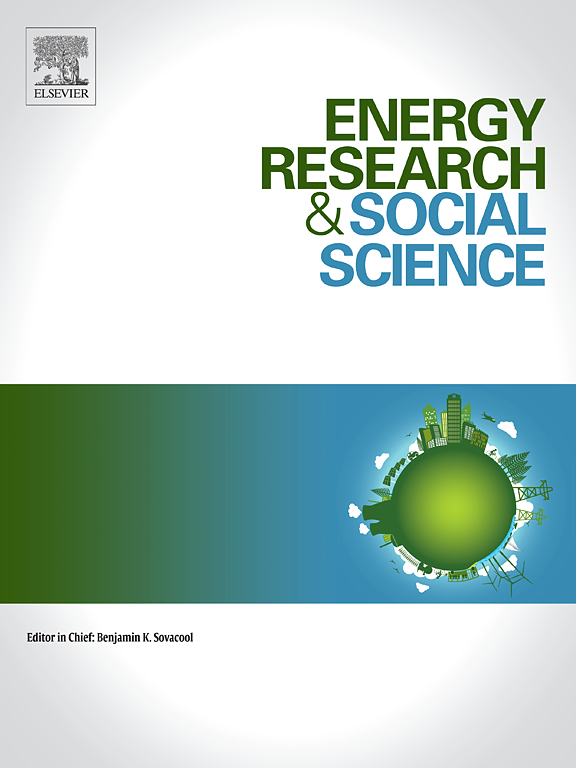Critical minerals lists for low-carbon transitions: Reviewing their structure, objectives, and limitations
IF 7.4
2区 经济学
Q1 ENVIRONMENTAL STUDIES
引用次数: 0
Abstract
Critical minerals lists have flourished in the past decade, in particular linked to the importance of critical minerals for low-carbon transitions. We identified 27 critical minerals or materials lists across 15 countries and the European Union (EU). These lists are designed to attract public and private attention and investments to secure both domestic and foreign supplies. This review article fills a gap in the existing literature by analyzing the ways in which these lists are defined and utilized by countries engaged in a mineral rush. We focus our attention on three categories of minerals – battery minerals, platinum-group metals (PGMs), and rare earth elements (REEs) that are particularly important to energy transitions. We situate this research in the broader legal and administrative developments that have driven critical minerals policies in the past decade. We provide an in-depth analysis of the commonalities and variations in the raw materials included in these lists, and identify six core limitations of critical minerals lists: (1) unclear links between criticality assessments and mineral prioritization (2) failure to account for the full mineral value-chain; (3) limited strategic alignment between allied nations; (4) limited flexibility in dynamic environments (5) limited consideration for recycling and by-product sourcing; and (6) reliance on incomplete reserve and resource data.
低碳转型的关键矿物清单:回顾它们的结构、目标和限制
关键矿物清单在过去十年中蓬勃发展,特别是与关键矿物对低碳转型的重要性有关。我们确定了15个国家和欧盟(EU)的27种关键矿物或材料清单。这些清单旨在吸引公众和私人的关注和投资,以确保国内和国外的供应。这篇评论文章通过分析参与矿产热的国家定义和利用这些清单的方式,填补了现有文献中的空白。我们将注意力集中在三类矿物上——电池矿物、铂族金属(pgm)和稀土元素(ree),它们对能源转型尤其重要。我们将这项研究置于更广泛的法律和行政发展中,这些发展在过去十年中推动了关键的矿产政策。我们对这些清单中包含的原材料的共性和差异进行了深入分析,并确定了关键矿物清单的六个核心局限性:(1)关键评估与矿物优先级之间的联系不明确;(2)未能考虑到整个矿物价值链;(3)盟国之间有限的战略结盟;(4)在动态环境中的灵活性有限(5)对回收和副产品采购的考虑有限;(6)依赖不完整的储量和资源数据。
本文章由计算机程序翻译,如有差异,请以英文原文为准。
求助全文
约1分钟内获得全文
求助全文
来源期刊

Energy Research & Social Science
ENVIRONMENTAL STUDIES-
CiteScore
14.00
自引率
16.40%
发文量
441
审稿时长
55 days
期刊介绍:
Energy Research & Social Science (ERSS) is a peer-reviewed international journal that publishes original research and review articles examining the relationship between energy systems and society. ERSS covers a range of topics revolving around the intersection of energy technologies, fuels, and resources on one side and social processes and influences - including communities of energy users, people affected by energy production, social institutions, customs, traditions, behaviors, and policies - on the other. Put another way, ERSS investigates the social system surrounding energy technology and hardware. ERSS is relevant for energy practitioners, researchers interested in the social aspects of energy production or use, and policymakers.
Energy Research & Social Science (ERSS) provides an interdisciplinary forum to discuss how social and technical issues related to energy production and consumption interact. Energy production, distribution, and consumption all have both technical and human components, and the latter involves the human causes and consequences of energy-related activities and processes as well as social structures that shape how people interact with energy systems. Energy analysis, therefore, needs to look beyond the dimensions of technology and economics to include these social and human elements.
 求助内容:
求助内容: 应助结果提醒方式:
应助结果提醒方式:


